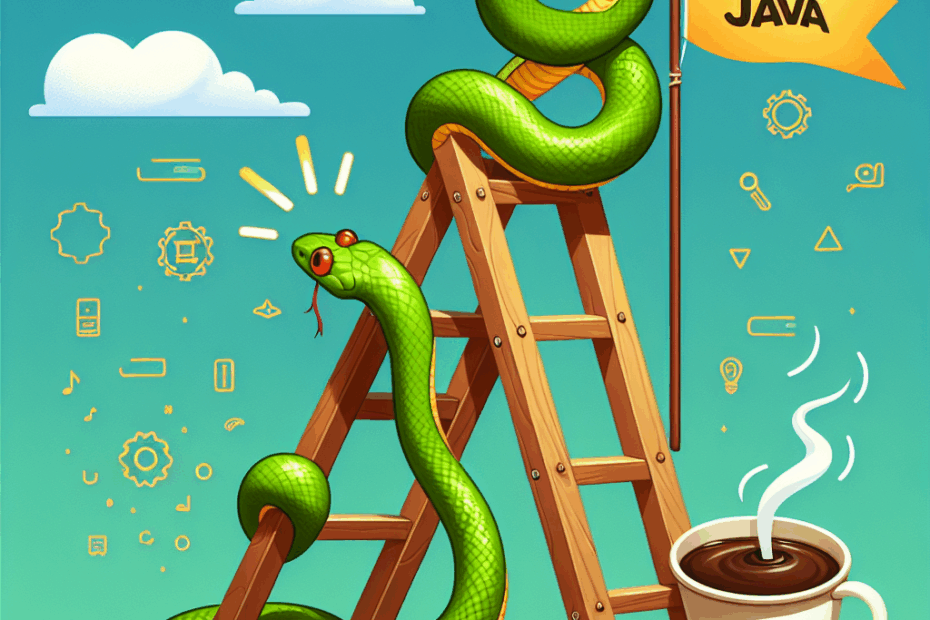Python is the King of Code!
Hey everyone, John here! Today, we’re talking about something super exciting in the world of programming: Python! It’s like the super-popular kid in school, and it’s only getting more popular. According to the Tiobe index, Python’s popularity is higher than it’s ever been in over two decades!
Python’s Skyrocketing Popularity
Python has reached a whopping 25.35% share in the Tiobe index. That’s HUGE! It’s like if a pizza had 10 slices, Python would take two and a half slices all for itself! It’s the highest rating any language has had since Java back in 2001.
And guess what? Python’s popularity jumped by about 2.2% in just one month! That’s like going from knowing 20 words in Spanish to knowing 22 in a single month – impressive!
Python vs. the Competition
Python isn’t just a little bit ahead; it’s way ahead! It’s leading the pack by a massive 15 percentage points. The second most popular language, C++, has only a 9.94% rating. It’s like Python is Usain Bolt in a coding race, leaving everyone else in the dust!
But why is everyone so obsessed with Python?
John: Well, Lila, that’s a great question! It’s super versatile and relatively easy to learn compared to some other languages. It’s used for everything from building websites to analyzing data and creating AI!
Why Other Languages Still Exist
Even though Python is amazing, it’s not perfect. According to Tiobe CEO Paul Jansen, Python can be a bit slow. Also, because it’s “interpreted,” it can sometimes have unexpected errors when you run the code.
Lila: Interpreted? What does that mean, John?
John: Good question, Lila! Think of it like this: some languages are like having a translator who translates the whole book (your code) at once before you read it. That’s like “compiled” languages. Interpreted languages, like Python, are like having a translator who translates one sentence at a time as you read it. It’s quicker to start, but it can sometimes be slower overall and you might not catch errors until you get to that sentence!
Because of these drawbacks, some critical systems like those in airplanes or medical devices still rely on other languages that are faster and more reliable.
The Importance of Python’s Ranking
Python’s number one spot today is even more impressive than Java’s back in 2001. Back then, Tiobe only tracked 20 languages. Now, they track a whopping 282! That means it’s much harder to get to the top spot now than it was back then.
How Tiobe Measures Popularity
So, how does Tiobe figure out which languages are popular? They look at things like:
- The number of skilled programmers using the language
- The number of courses teaching the language
- The number of companies using the language
They also check popular websites like Google, Wikipedia, Bing, and Amazon to see how often people are searching for information about each language.
Tiobe’s Top 10 Languages (May 2025)
Here’s a quick look at the top 10 languages according to Tiobe:
- Python (25.35%)
- C++ (9.94%)
- C (9.71%)
- Java (9.31%)
- C# (4.22%)
- JavaScript (3.68%)
- Go (2.7%)
- Visual Basic (2.62%)
- Delphi/Object Pascal (2.29%)
- SQL (1.9%)
The PYPL Index
There’s another index called the PYPL (Popularity of Programming Language) index. It measures popularity by analyzing how often people search for languages on Google.
PYPL’s Top 10 Languages (May 2025)
Here’s PYPL’s take on the top 10:
- Python (30.41%)
- Java (15.12%)
- JavaScript (7.93%)
- C/C++ (6.98%)
- C# (6.09%)
- R (4.59%)
- PHP (3.71%)
- Rust (3.09%)
- TypeScript (2.8%)
- Objective-C (2.76%)
Final Thoughts
John: It’s clear that Python’s dominance is hard to ignore. Its ease of use and versatility make it a favorite for many developers. While it may not be perfect for every single task, its widespread adoption speaks volumes.
Lila: Wow, John! That was super interesting! I didn’t realize how popular Python was. Maybe I should start learning it!
This article is based on the following original source, summarized from the author’s perspective:
Python popularity climbs to highest ever – Tiobe
